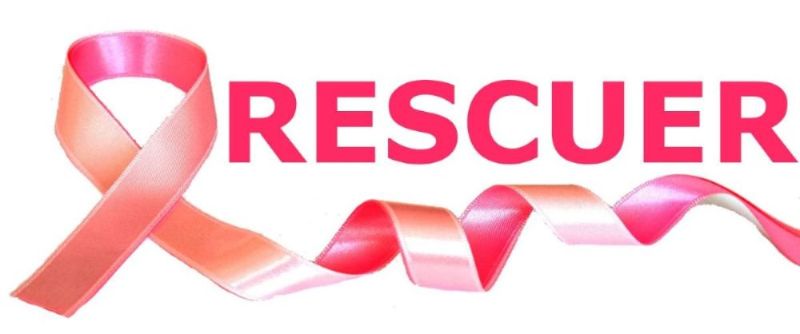The funds are in place, the network has grown, the data has been collected, and research findings are published. With an extra year due to the coronavirus pandemic, the EU project RESCUER will in 2024 enter its final two years and crucial phase.
The goal of RESCUER is to predict which treatment will work best against breast cancer for each individual patient using data models.
To achieve this, Professor and Principal Investigator Vessela Kristensen has gathered some of Europe's leading laboratory researchers and statisticians. Two research environments at UiO, one at the Institute of Clinical Medicine and one at the Institute of Basic Medical Sciences, are involved in the project.
Researchers in the RESCUER project have so far published more than 30 articles in well-renowned journals, and the research results are attracting great interest.
But what significance do large EU projects like RESCUER have for further research?And how can we manage the resources from such projects so that they are not lost when the project period is over?
"We must ensure that we do not lose the research talents recruited by the project, and the opportunity to continue working with the data material when RESCUER is completed," Kristensen says.
Being a project coordinator is a significant responsibility
RESCUER is funded through the EU's Horizon 2020 program, recognised as the world's largest research program. Achieving success in the competition for funds is highly prestigious.
Receiving a grant as coordinator means you're entrusted with significant confidence, both by the EU and renowned colleagues. With this trust, there also comes responsibility.
It's the project coordinator's duty to assemble and lead the network of researchers within the project.
Kristensen is focused on how she, as a coordinator, can ensure that the resources from RESCUER are well-managed.
"All the research data we have collected is our capital. We must invest this capital into something even bigger for the future," the project leader believes.
New local projects are emerging from RESCUER
RESCUER exemplifies how a major international project is closely linked to local research activity.
It was the collaboration through the convergence environment PERCATHE at UiO:Life Sciences that laid the foundation for what would later become the large EU project RESCUER. The RESCUER project has also joined the Centre for Digital Life Norway, a national centre for biotechnological research and innovation.
New ideas and environments are now emerging from RESCUER’s success.
"What we are now seeing is that the international project RESCUER has had a positive impact on new research activity locally," Kristensen points out.
Career building for young researchers
The project leader explains that many young researchers use the networks that international projects provide to gain new collaborators. This is of great advantage when applying for national funds for new research projects.
Hence, EU projects can have a significant impact on the career development of young researchers.
"Some of the young talents in RESCUER have already received national funds for new projects," Kristensen says, continuing:
"We hope to receive more funding so that we can hold on to the young talents and their research groups."
.webp)
We need to connect people and opportunities
The project leader has specific thoughts on how leaders can help ensure that resources from large projects are properly managed in the future.
"We need to facilitate the further career development of the young researchers in the project. We must connect people and opportunities so that our young talents find jobs and can continue to develop their research career in Norway," Kristensen says.
"Programmes from the Research Council of Norway like Young Talents, the University's initiative UiO Growth House, new so-called biotech spin-offs, Oslo Cancer Cluster, and the future Oslo Science City can be important programmes and arenas for this," she adds.
Hoping new collaborations will emerge from interdisciplinary meetings
The environments at UiO that are part of RESCUER are led by Professor Vessela Kristensen from the Institute of Clinical Medicine and Professor Arnoldo Frigessi from the Institute of Basic Medical Sciences at UiO.
The two research groups meet annually in December. Kristensen's group consists of laboratory researchers and bioinformaticians, while the environment led by Frigessi is comprised entirely of mathematicians and statisticians.
"During these gatherings, we present results from ongoing projects and discuss new ideas. We try to understand each other's research and discuss how we can build on it in the RESCUER studies," Frigessi explains.
"We hope that these pre-Christmas meetings, which we have organised for several years now, allow the researchers from the different environments at UiO and OUS to get to know each other and develop new project ideas," Kristensen adds.
There is much to learn from the RESCUER project
"There's a lot to learn from the RESCUER project. Vessela Kristensen explains in an exemplary manner how a project leader can proceed to secure the values delivered through a large research project," Jan Bjaalie, Pro-Dean for Research and Innovation at the Faculty of Medicine, says.
He points out that alternatives for continuation must be clarified well before the project ends.
"It is essential that there are different mechanisms to build further on results, data, and accumulated expertise. In the Faculty and University management, we are very aware of this challenge. The succession following projects like RESCUER motivates us further in our work developing a new roadmap for research funding at the Faculty/University," he says.
Contact
Read more
- Computer modeling as a new way to improve breast cancer treatment
- RESCUER's website
- RESCUER project page
- Centre for digital life Norway (external website)

.webp)